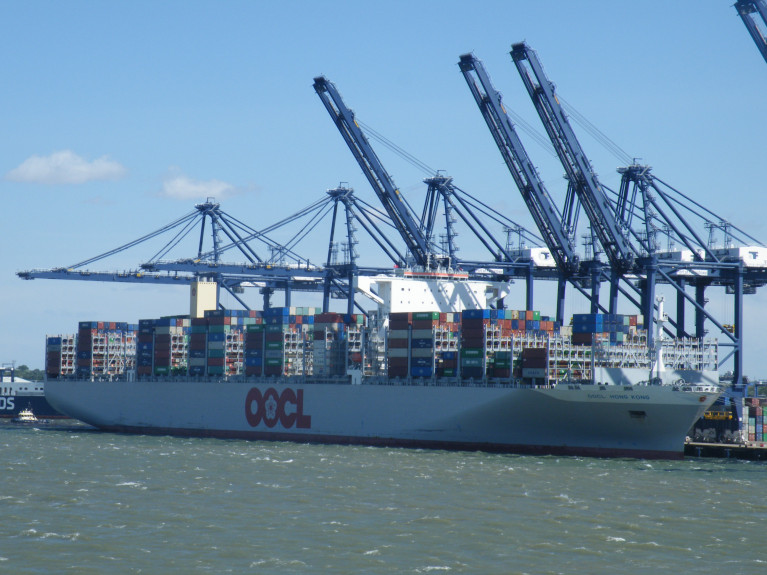Displaying items by tag: SmallGiant Box Boats
Dun Laoghaire Containership Anna G Arrives At UK's Biggest Box-Boat Port Where Giant Asia-Europe Ship Is Berthed
The 'feeder' containership Anna G which departed Dun Laoghaire Harbour following lengthly repairs was tracked by Afloat having arrived this morning to Felixstowe, the UK's biggest box-boat port, writes Jehan Ashmore.
The 101m Anna G (3,992grt) is described as a 'feeder' containership with a carrying capacity of 509 TEU (twenty-foot equivelent unit) however such small ships ply a vital role in the overall global logistics supply-chain by loading/discharging containers for short-sea passages.
Feederships such as Anna G make containership transhipments by connecting to/from considerably larger ships that have travelled on ocean voyages linking continents.
For example, the giant 400m long OOCL Hong Kong (210,890grt) which too is currently berthed at the Suffolk port, had sailed from Singapore in Asia. The ship's next European port of call is Gdansk in Poland.
As previously reported on Afloat, when OOCL Hong Kong entered service in 2017, the G-class vessel was the largest ever containership built and the first to surpass the 21,000 TEU capacity threshold.
The shipowners of Anna G are the German operator Reederei Gerdes based in Haren. The family owned company operates 11 ships, however the ship which had been in Dun Laoghaire since mid-November, is the only containership as the rest of the fleet comprises of short-sea general cargoships.
As for OOCL Hong Kong, the giant ship's operator is Orient Overseas Container Line, commonly known as OOCL, which is a container shipping and logistics service company with headquarters located in Hong Kong, China. They have 59 vessels of different classes with capacity varying from 2,992 to 21,413 TEU.
The Port of Felixstowe, operated by Hutchinson Ports comprises of two quays, Trinity Quay where Anna G is berthed along with other containerships and to the east, Berths 8 & 9 where OOCL Hong Kong is alongside. These berths can handle the largest containerships in service.
At the western end of Trinity Quay is where the River Orwell flows downriver from the Port of Ipswich from where Arklow Shipping's short-sea general cargoships and bulkers have down the decades traded. In particular in the transportation of agricultural products from farms in East Anglia.





























































